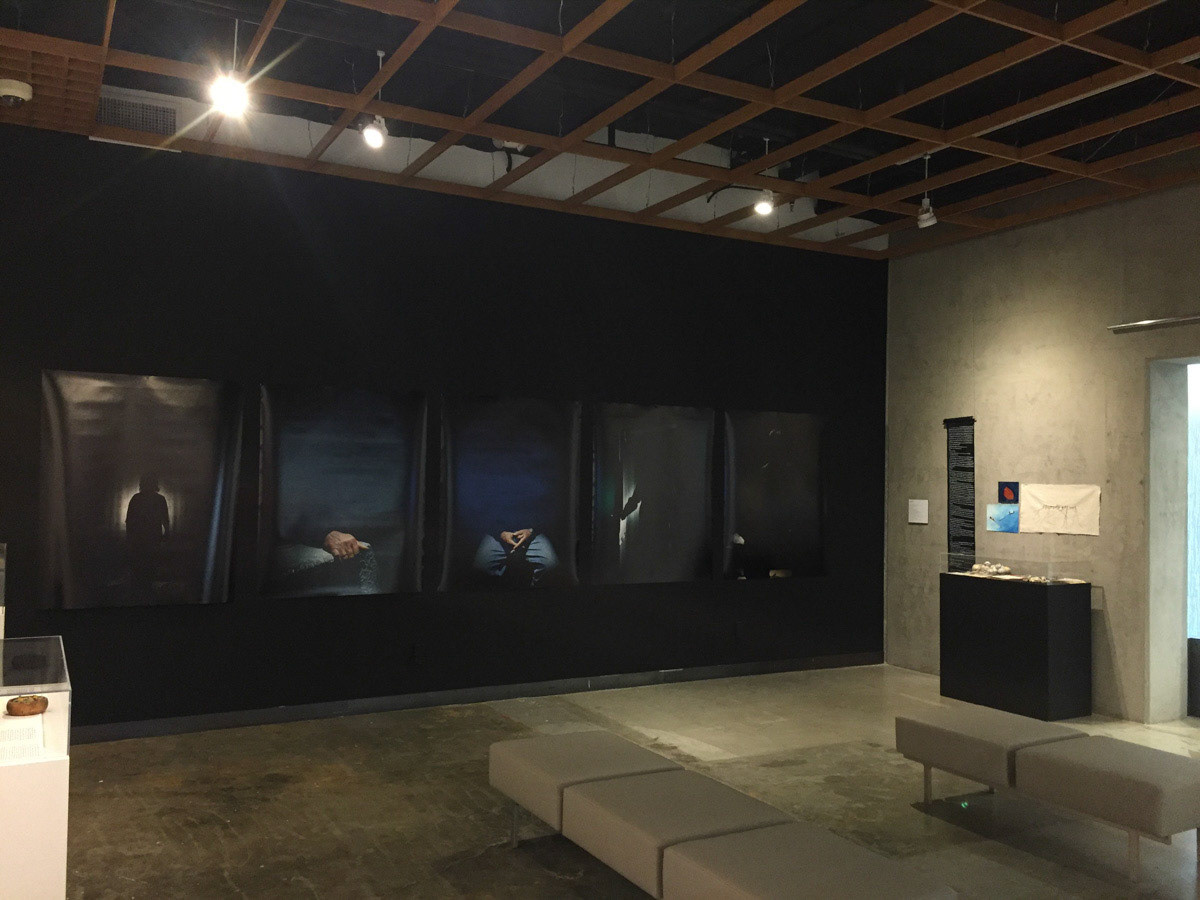Downtown Central Library, Glendale
March 17 - May 6, 2018
March 17 - May 6, 2018
ReflectSpace Gallery
Nonlinear Histories:
Nonlinear Histories:
Transgenerational Memory of Trauma
Artists
Jean Marie Casbarian
Jean Marie Casbarian
Eileen Claveloux
Didem Erk
Hrayr Eulmessekian
Silvina Der Meguerditchian
Silvina Der Meguerditchian
Hrair Sarkissian
Harry Vorperian
Co-Curated by Isin Onol and Ara & Anahid Oshagan
____________________________________________________________
PassageWay
Prosperity, Loss, and Survival:
A Photographic Journey from
the Dildilian Family Archive
Prosperity, Loss, and Survival:
A Photographic Journey from
the Dildilian Family Archive
Co-Curated by Armen T. Marsoobian and Isin Onol















ReflectSpace Gallery at Downtown Central hosts Nonlinear Histories: Transgenerational Memory of Trauma, an exhibition that explores the poetics and politics of memory and inherited trauma of the Armenian Genocide. Revolving around the idea of postmemory, a concept developed by renown literary and cultural critic Marianne Hirsch, Nonlinear Histories probes memories and narratives transmitted in the wake of trauma: the process of its individual and collective ownership, and the collision of personal, national and cultural memories.
Artists in exhibition include Jean Marie Casbarian, Eileen Claveloux, Didem Erk, Hrayr Eulmessekian, Silvina Der Meguerditchian, Hrair Sarkissian and Harry Vorperian. Nonlinear Histories is co-curated by Ara and Anahid Oshagan and Isin Onol.
Simultaneously with the Nonlinear Histories, the PassageWay at Downtown Central is hosting an archival exhibition of family memoirs and historic photographs: Prosperity, Loss, and Survival: A Photographic Journey from the Dildilian Family Archive. An extensive exhibition based upon the Dildilian family archive, Continuity and Rupture: An Armenian Family Odyssey, will open to public at the Glendale Brand Art Center on March 24 at 6 pm. Continuity and Rupture is co-curated by Armen T. Marsoobian and by Isin Onol.
The two exhibitions, Nonlinear Histories in ReflectSpace Gallery and Prosperity, Loss, and Survival in the PassageWay, open on March 17 and run until May 6, 2018. The opening reception is on Saturday March 17 from 5 – 8 pm, with a lecture by Dr. Marianne Hirsch at 7 pm entitled "Forty Days and More: Connective Histories.”
Dr. Marianne Hirsch is a William Peterfield Trent Professor of English and Comparative Literature at Columbia University. Her critically acclaimed work combines feminist theory with memory studies, particularly the transmission of memories of violence across generations.
The exhibitions will be preceded by a 3-day workshop, Texture of Memory, at the library by Berlin-based artist Silvina Der Meguerditchian in which Glendale community members will weave a collective tapestry composed of their family photographs and memories. The result of this workshop will be included in Nonlinear Histories. To participate in this free workshop, please contact the library. Space is limited.
Silvina Der Meguerditchian’s installation, “Treasures”, builds on an astounding object inherited from her maternal great-grandmother and Genocide survivor Hripsime: a hand-written notebook of 350 folk health remedies. The installation consists of the 130 page archival notebook itself and objects that relate her great-grandmother’s recipes to ancient medical manuscripts and encyclopedias, “putting her … back into the line of History, into the tradition of healers from Cilicia.” (Marianne Hirsch). For Nonlinear Histories, Silvina re-configures and re-imagines “Treasures” which was part of “Armenity” exhibition in the Armenian pavilion at the Venice Biennale in 2015 that won the “Golden Lion” prize.
London-based photographer and artist Hrair Sarkissian displays images from his series “Unexposed” which were also part of “Armenity” at the Venice Biennale. The series deals with descendants of Armenians who converted to Islam to escape the Armenian genocide. Today, having rediscovered their roots, and reconverted to Christianity, they are forced to conceal their newfound Armenian identity. Not accepted by Turkish society and not fully part of the Armenian community, they remain invisible.
New York based artist Jean Marie Casbarian sources the sparse archive of her grandmother, Margaret Jurigian, in an attempt to “re-member” and imagine a life that was never fully realized. Working with little more than a few photographs and sketchy anecdotes passed down from generations, Casbarian, writing under the guise of Margaret, narrates Margaret’s life through real and fictitious journal entries, images, texts and public archives. The resulting juxtaposed text and image cross the boundaries of truth and daydream.
Sourcing the needlework of his grandmother Lily, Los Angeles artist, Harry Vorperian brings “Liliy’s Garden” to multiple spaces in the Downtown Library. Composed of concrete and steel oversized flowers, the public art installation evokes ancient forms from the Armenian region of Marash in a contemporary context. Lily Vorperian is an NEA Lifetime Achievement Honoree.
Istanbul-based artist Didem Erk addresses her relationship to trauma, memory and archive as a process that can never come to completion. She presents her works as archeological objects under glass that cannot be accessed: official and oral history are intertwined and inseparable.
Hrayr Eulmessekian, Los Angeles-based conceptual artist, will present work from an ongoing series “On Deep Background” that started in 1997. “On Background” is reminiscent of the first Beirut downtown reconstruction attempt of sandblasting grime and soot off of buildings and patching up bullet holes. “On Background” is a futile attempt to retouch what lies underneath and what the stressed metal betrays.
Eileen Claveloux’s “The Naming” is a personal film reflecting on her family and the direct and indirect impact of the trauma of the Armenian Genocide on her generation.
Prosperity, Loss, and Survival: A Photographic Journey from the Dildilian Family Archive, in the PassageWay, is an exhibition that employs family memoirs and historic photographs from the Dildilians, a family of renowned Armenian photographers. This unique photographic collection was gathered by the Dildilian family in Ottoman Turkey over a 34-year period and miraculously made the passage through the Genocide intact. There are well over 1000 photographs and glass negatives in the collection that testify to the cultural, educational and commercial achievements of the Armenians in the Ottoman Empire.
ReflectSpace Gallery exhibits are made possible with support from the Glendale Library Foundation.
